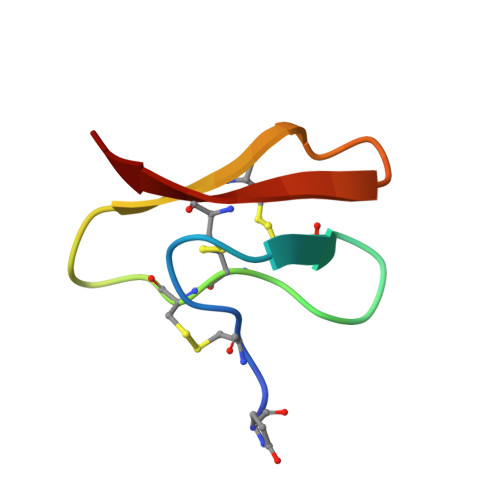Asteropsin A: An unusual cystine-crosslinked peptide from porifera enhances neuronal Ca(2+) influx
Li, H., Bowling, J.J., Fronczek, F.R., Hong, J., Jabba, S.V., Murray, T.F., Ha, N.C., Hamann, M.T., Jung, J.H.(2012) Biochim Biophys Acta 1830: 2591-2599
- PubMed: 23201194
- DOI: https://doi.org/10.1016/j.bbagen.2012.11.015
- Primary Citation of Related Structures:
2LQA - PubMed Abstract:
Herein we report the discovery of a cystine-crosslinked peptide from Porifera along with high-quality spatial details accompanied by the description of its unique effect on neuronal calcium influx. Asteropsin A (ASPA) was isolated from the marine sponge Asteropus sp., and its structure was independently determined using X-ray crystallography (0.87 angstroms) and solution NMR spectroscopy. An N-terminal pyroglutamate modification, uncommon cis proline conformations, and absence of basic residues helped distinguish ASPA from other cystine-crosslinked knot peptides. ASPA enhanced Ca2+ influx in murine cerebrocortical neuron cells following the addition of the Na+ channel activator veratridine but did not modify the oscillation frequency or amplitude of neuronal Ca2+ currents alone. Allosterism at neurotoxin site 2 was not observed, suggesting an alternative to the known Na+ channel interaction. Together with a distinct biological activity, the origin of ASPA suggests a new subclass of cystine-rich knot peptides associated with Porifera. The discovery of ASPA represents a distinctive addition to an emerging subclass of cystine-crosslinked knot peptides from Porifera.
- College of Pharmacy, Pusan National University, Busan 609-735, Korea. lihuayue@naver.com
Organizational Affiliation:

















